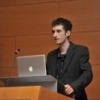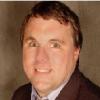i'm impressed by the qquality of the answerI'm sure MR can explain it more correctly and eloquently, but it's simple, a. curve squaring does not work the way you think it does (I think someone in this thread conveyed the wrong message) and b. indeed, there are other diseases that will invariably kill you. First, you can't eradicate all the "age-related" diseases by any sort of curve-squaring measure anyway: cancer, CVD, dementias (AD, parkinson, etc), a trashed immune system, sarcopenia & osteoporosis, etc. Then, even if you could eliminate for instance CVD and cancer in the classical sense, people would be still dropping like flies. You need the whole package (or most of it) and you need to eliminate all the possible killers. It is believed that if you avoid classical CVD, cancer and most other causes of premature death (like most cenetarians do) amyloidosis will kill you. Apparently widespread cardiac amyloidosis is ubiquitous in the very old. Or any other type of cumulative damage e.g., and probably most prominently, decline of the cardiorespiratory system caused by elastin degredation, glycation, calcification, reduced tissue viability (necrotic/fibrotic and intracellular changes, prolly aging of the stem cell niche & reduced regenerative ability) and sarcopenia - your heart stops, inescapable death.I must admit that these "squaring the curve" findings are very puzzling to me. Most people drop dead from something. What these findings seem to be saying is that even if you eliminate those somethings, you will still drop dead right on cue, from nothing?
The issue is that the line between merely "age-related" and aging per se is blurry and even though SENS tries to deal with aging damage in the strictest sense, they still (have to?) deal with classical atherosclerosis and visceral fat because it is an important age-related killer. As a rule of thumb: most of the "deadly 7" SENS tries to fix are presumably basic, genuine aging damage, which is not stopped by exercise or curve-squaring supplements e.g. lipofuscin aggregates, mitochondrial aging, glycation damage, cancer and a lot of "trash" (amyloid, death-resistant cells, etc). Most of those problems cause the so called "age-related" diseases.
I hope my understanding is correct and the explanation makes sense to you.

#91
Posted 01 December 2009 - 10:45 PM
#92
Posted 28 December 2009 - 07:32 PM
The control group showed a significant decrease in MMSE score (mean difference -1.21, 95% CI -1.83/-0.60, p = 0.0002), which differed significantly (p = 0.02) from the treatment group scores (-0.21, 95% CI -0.79/0.37, p = 0.47). The odds ratio for the treated older adults to have a stable cognitive status after 1 year, as compared to the control group, was 2.74 (95% CI 1.16/6.48) after adjustment for age, gender, educational level and several other possible confounders. Blood pressure, body mass index, waist circumference and serum cholesterol did not differ significantly between the two groups, while CRP decreased only in the treatment group. CONCLUSIONS: A 12-month EET intervention may reduce the progression of age-related cognitive decline in healthy older adults.
Sedentary lifestyle promotes immune disfunction.
The elderly population is at an unprecedented risk of infectious diseases and malignancy due to apparently inevitable age-related declines in immunity. The 'immune risk profile' (IRP) is an array of biomarkers that has been used to predict morbidity and mortality in older adults. As it is generally accepted that middle-aged and elderly individuals who habitually participate in moderate-intensity exercise are less likely to incur an infection than their sedentary counterparts, this review addresses current knowledge on the effects of regular exercise on aspects of adaptive immunity as they relate to the IRP.
#93
Posted 28 December 2009 - 10:49 PM
It's all about aging well
Gravrilov argues in "Handbook of the biology of aging, sixth edition" that aging well doesn't exist. Because aging is, in reliability theory, a synonym for degradation, healthy aging doesn't exist. He argues that it would be more appropriate to speak about delayed aging, postponed aging, slow aging, arrested aging, negligible aging or aging reversal instead of healthy aging, successful aging, or aging well.
Does exercise increase your lifespan? It depends on which lifespan you are talking about. The maximal lifespan is only influenced by genetics and calorie restriction but the mean lifespan is influenced by a lot of factors including diet (independent of calorie intake), exercise, smoking, stress, maybe some supplements,...
#94
Posted 12 January 2010 - 07:04 PM
Not only does exercise work to improve your health and mean lifespan...it is cheap.
A total of 29 participants completed the study. Overall, the patients in the high-intensity aerobic exercise group experienced improved cognitive function compared with those in the control group. These effects were more pronounced in women than in men, despite similar increases in fitness. The sex differences may be related to the metabolic effects of exercise, as changes to the body's use and production of insulin, glucose and the stress hormone cortisol differed in men and women.
"Aerobic exercise is a cost-effective practice that is associated with numerous physical benefits. The results of this study suggest that exercise also provides a cognitive benefit for some adults with mild cognitive impairment," the authors conclude. "Six months of a behavioral intervention involving regular intervals of increased heart rate was sufficient to improve cognitive performance for an at-risk group WITHOUT the cost and adverse effects associated with most pharmaceutical therapies."
#95
Posted 20 January 2010 - 08:00 PM
Aerobic exercise grows brain cells.(caveat: in rats)
Neuroscientists from University of Cambridge in the UK and the National Institute on Aging in Baltimore in the US have joined forces to study the effects of running. Working on mice, they showed that even a few days of running stimulates the brain to grow new cells in a part of the brain involved in memory and recall.
The scientists divided the mice into two groups: one of which had a running wheel they could use at any time, and the other of which did not. They trained each mouse by placing it in front of a computer screen displaying two squares. If the mouse used its nose to nudge the square on the left it was given a sugar pellet as a reward. If it nudged the other square, there was no reward.
The mice were then given brief memory tests designed to see how effectively they could separate similar memories. They scored higher points the more they nudged the square on the left, but the squares began 30 cm apart and were brought progressively closer together during the tests until they were almost touching.
In the memory tests the scores of mice with access to the running wheel were almost double those of the non-running group. The difference between scores was greatest in the later stages, when the squares were almost touching.
#96
Posted 17 March 2010 - 11:46 PM
First of all, if the thought of getting older depresses you then you better get used to it. Not the depression but rather the getting older. At the moment, that's inevitable. Best thing do you is to change the way you think of getting older. Old does not mean pain and suffering. Second, what do you mean by the "rate of biological aging"? Are you referring to intrinsic aging?Re. exercise and slowing the rate of aging....well I don't think that we are referring to aging per se in this situation. We're referring to the accelerated aging that comes from the miss/disuse of the various organs and organs systems. Exercise keeps the body growing by forcing it to adapt to it's environment. These adaptations help us deal with the stress(es) that we face in life. For example, aerobic exercise stresses the body increases it's demand for oxygen. The oxygen is needed to fuel the aerobic exercise and without it the body struggles. So, because the body is a learning machine very much like a network computer, and learns to adapt to a stimulus so that can function in it's environment, aerobic exercise increases our cells ability to utilize oxygen. Not just for aerobic exercise but across the board. An increase in the cells ability to utilize oxygen (measure by VO2max) helps us deal with fight or flight stress situation. Another great example can be given with skeletal muscle. As we age there is a certain degree of muscle strength training increases the muscles cross sectional area but also wakes up the motor neuron that stimulates the muscle. Waking up the motor neuron increases the muscles response time and hence can help prevent falls in the elderly because the muscle ability to sense and correct change is increased. Preventing falls in the elderly prevents possible hip fractures. A hip fracture in advanced age is a devastating insult to the bodies physiology.So, to answer your question, I think exercise will make you feel young again. Finding that youthful vigor is the important first step IMO. Exercise will also help you in the following ways;1. increased muscle mass means increased basal metabolic rate. This will keep your weight in check. It will also minimize you chance of diabetes because muscle is the largest glucose store in the body.2. Keep you agile so that you can quickly adapt to your environment and prevent injury and illness. This statement stands for both the skeletal muscle, cardiac muscle and cardiovascular system. 3. If your not exercising already, exercise will help you become more aware of your body. You will naturally become more aware of your health as well. You become more health conscious and less lazy. LESS LAZY!So I'm starting to get older and it depresses me. I've heard exercise can slow the rate of biological aging to some extent. True?
Matt you are a very strong proponent of CR but I do not think that CR is for everyone. In fact I read a few studies in 2007 (can't find them now) that demonstrated that whilst the research data in animals/primates is proposing, adherence to a calorie restricted diet for long periods of times in humans is not common. Anyhow....Matt what's the latest research re. humans and CR.No I don't believe exercise can slow the rate of aging. You need to do Calorie Restriction to do that.... there is always a chance resveratrol 'might' work though.
#97
Posted 09 April 2010 - 10:22 AM
#98
Posted 15 April 2010 - 11:13 PM
#99
Posted 31 May 2010 - 10:53 PM
Immunobiology. 2009 May 19. [Epub ahead of print]
Endocannabinoids, FOXO and the metabolic syndrome: Redox, function and tipping point - The view from two systems.
Nunn AV, Guy GW, Bell JD.
Metabolic and Molecular Imaging Group, MRC Clinical Sciences Centre, Hammersmith Hospital, Imperial College, Du Cane Road, London W12 OHS, UK.
Abstract
The endocannabinoid system (ECS) was only 'discovered' in the 1990s. Since then, many new ligands have been identified, as well as many new intracellular targets - ranging from the PPARs, to mitochondria, to lipid rafts. It was thought that blocking the CB-1 receptor might reverse obesity and the metabolic syndrome. This was based on the idea that the ECS was dysfunctional in these conditions. This has met with limited success. The reason may be that the ECS is a homeostatic system, which integrates energy seeking and storage behaviour with resistance to oxidative stress. It could be viewed as having thrifty actions. Thriftiness is an innate property of life, which is programmed to a set point by both environment and genetics, resulting in an epigenotype perfectly adapted to its environment. This thrifty set point can be modulated by hormetic stimuli, such as exercise, cold and plant micronutrients. We have proposed that the physiological and protective insulin resistance that underlies thriftiness encapsulates something called 'redox thriftiness', whereby insulin resistance is determined by the ability to resist oxidative stress. Modern man has removed most hormetic stimuli and replaced them with a calorific sedentary lifestyle, leading to increased risk of metabolic inflexibility. We suggest that there is a tipping point where lipotoxicity in adipose and hepatic cells induces mild inflammation, which switches thrifty insulin resistance to inflammation-driven insulin resistance. To understand this, we propose that the metabolic syndrome could be seen from the viewpoint of the ECS, the mitochondrion and the FOXO group of transcription factors. FOXO has many thrifty actions, including increasing insulin resistance and appetite, suppressing oxidative stress and shifting the organism towards using fatty acids. In concert with factors such as PGC-1, they also modify mitochondrial function and biogenesis. Hence, the ECS and FOXO may interact at many points; one of which may be via intracellular redox signalling. As cannabinoids have been shown to modulate reactive oxygen species production, it is possible that they can upregulate anti-oxidant defences. This suggests they may have an 'endohormetic' signalling function. The tipping point into the metabolic syndrome may be the result of a chronic lack of hormetic stimuli (in particular, physical activity), and thus, stimulus for PGC-1, with a resultant reduction in mitochondrial function and a reduced lipid capacitance. This, in the context of a positive calorie environment, will result in increased visceral adipose tissue volume, abnormal ectopic fat content and systemic inflammation. This would worsen the inflammatory-driven pathological insulin resistance and inability to deal with lipids. The resultant oxidative stress may therefore drive a compensatory anti-oxidative response epitomised by the ECS and FOXO. Thus, although blocking the ECS (e.g. via rimonabant) may induce temporary weight loss, it may compromise long-term stress resistance. Clues about how to modulate the system more safely are emerging from observations that some polyphenols, such as resveratrol and possibly, some phytocannabinoids, can modulate mitochondrial function and might improve resistance to a modern lifestyle. Copyright © 2009 Elsevier GmbH. All rights reserved.
PMID: 19457573 [PubMed - as supplied by publisher]
This therefore suggests that in the metabolic syndrome, a lack of physical activity reduces muscle-stimulated activation of PGC-1, which results in rising inflammatory tone and thus oxidative stress. This then activates JNK and FOXO, which is a protective response. In evolutionary terms, this makes sense, as most organisms always had to move to find food. However, injury or infection, would tend to cause the animal to rest (as it would feel unwell), and would result in energy release for repair. Starvation would probably induce both stress and induce incentive salience to find food. Thus, both exercise and starvation would be strong PGC-1 stimulators and induce mitochondrial biogenesis, and would involve FOXO in a context-dependent fashion; fasting and little movement would ensure FOXO activity, but exercise would induce PGC-1 and thus maintain resistance to oxidative stress, and counteract muscle wastage.
#100
Posted 12 July 2010 - 09:59 PM
#101
Posted 13 July 2010 - 07:06 PM
#102
Posted 23 October 2011 - 12:48 PM
I am an avid exerciser but have recently become concerened about overtraining. This can actually cause more wear and tear on your body over time. Recovery is just as important as exercise and nutrition. I have started tracking my Wellness and recovery condition with the Fitness module in the AWS Heart Wizard. By monitoring my fitness level I can see days when I need to recover rather than push myself. It has becomre a wonderful healing tool and very helpful keeping my health on track.
It seems the balance of recent research indicates that shorter duration, more intense, exercise is better than chronic endurance type exercising. Both are better than doing nothing, but over-doing the endurance, especially if you are not getting paid to do it (professional athlete, marathoner), is not as good.
#103
Posted 23 October 2011 - 12:57 PM
Exercising counteracts many of the diseases of aging.
Exercise influences stem cells to become bone marrow instead of fat (in mice).
#104
Posted 23 October 2011 - 01:24 PM
It is also important that you execute your optimal way of training (short, interval or long durations) your entire life. So it might be important to define the notion of "chronic" or "endurance". I think optimal duration training moments 4 or 5 times a week that are "endured" for a long period of your life are the way to go indeed.
And one of the implications you are mentioning is to not overdo it. Most studies do not test for an upper limit and we know that most (or at least a lot) of the effects of these phenomenon behave according a U shaped curve. If someone can find studies on this I would be very interested.
An example of the life-type endurance.
Mech Ageing Dev. 2010 Feb;131(2):165-7. Epub 2010 Jan 12.
Leukocyte telomere length is preserved with aging in endurance exercise-trained adults and related to maximal aerobic capacity.
LaRocca TJ, Seals DR, Pierce GL.
Source
Department of Integrative Physiology, University of Colorado, Boulder, CO 80309, USA.
Abstract
Telomere length (TL), a measure of replicative senescence, decreases with aging, but the factors involved are incompletely understood. To determine if age-associated reductions in TL are related to habitual endurance exercise and maximal aerobic exercise capacity (maximal oxygen consumption, VO(2)max), we studied groups of young (18-32 years; n=15, 7 male) and older (55-72 years; n=15, 9 male) sedentary and young (n=10, 7 male) and older (n=17, 11 male) endurance exercise-trained healthy adults. Leukocyte TL (LTL) was shorter in the older (7059+/-141 bp) vs. young (8407+/-218) sedentary adults (P<0.01). LTL of the older endurance-trained adults (7992+/-169 bp) was approximately 900 bp greater than their sedentary peers (P<0.01) and was not significantly different (P=0.12) from young exercise-trained adults (8579+/-413). LTL was positively related to VO(2)max as a result of a significant association in older adults (r=0.44, P<0.01). Stepwise multiple regression analysis revealed that VO(2)max was the only independent predictor of LTL in the overall group. Our results indicate that LTL is preserved in healthy older adults who perform vigorous aerobic exercise and is positively related to maximal aerobic exercise capacity. This may represent a novel molecular mechanism underlying the "anti-aging" effects of maintaining high aerobic fitness.
2010 Elsevier Ireland Ltd. All rights reserved.
PMID: 20064545 [PubMed - indexed for MEDLINE] PMCID: PMC2845985
This study produces some interesting findings:
- Telomere length is increased in individuals that do vigorous training.
- The difference in TL of training and non-training becomes more profound at increased age (see diagram 1)
- There is a positive correlation between exercise, TL and VO2max. (see diagram 2)
 longecity diagram 1.gif 25.62KB
11 downloads
longecity diagram 1.gif 25.62KB
11 downloads longecity diagram 2.gif 17.92KB
11 downloads
longecity diagram 2.gif 17.92KB
11 downloadsThe results of the present study provide evidence that LTL is related to regular vigorous aerobic exercise and maximal aerobic exercise capacity with aging in healthy humans. LTL is not influenced by aerobic exercise status among young subjects, presumably because TL is intact (i.e., already normal) in sedentary healthy young adults. However, as LTL shortens with aging it appears that maintenance of aerobic fitness, produced by chronic strenuous exercise and reflected by higher VO2max, acts to preserve LTL.
Color emphasis added by meHabitual aerobic exercise modulates VO2max, but as much as ~50% of the latter is determined primarily by genetic factors (Bouchard et al., 1998 & 1999). Shorter-term exercise training has no effect on LTL in humans or mice (Shin et al., 2008; Werner et al., 2008), but does modulate telomere-regulating proteins (Werneret al., 2008). This may suggest that longer-term or more strenuous exercise is required to influence LTL.
Edited by Brainbox, 23 October 2011 - 01:38 PM.
#105
Posted 23 October 2011 - 01:48 PM
#106
Posted 23 October 2011 - 02:32 PM
#107
Posted 29 October 2011 - 10:15 AM
#109
Posted 06 December 2011 - 08:28 PM
I think it's a good idea to examine our preconceptions of what a certain age "looks" like. If your basis for what "50" looks like consists of celebrities who are in their fifties, then your perception is going to be quite skewed, especially if you are thinking of the best-looking celebrities for that age group (or for any age group over 30).
Generally speaking the best-looking people in ANY age group above 30 or so are that way because they follow healthy diet and exercise habits. Genetics will only help you up to a certain age, and after about 25-35, most people who are naturally attractive will start looking worse than their "age" if they don't take care of themselves. Madonna is a perfect example of this. Does Madonna look like she's in her fifties?
If your reference pool is "Celebrities who exercise regularly, eat well, and have tastefully done plastic surgery", then the answer is "Yes". If your reference pool is the general population, then the answer is "No".
As always, there are genetic freaks who can smoke a pack a day, eat like crap, never lift a finger, and still look good for most of their lives, but these are extreme outliers.
Another thing to consider past a certain age (which seems to be around 40) is whether someone feels and acts like their age. Jack Lalanne was a good example of this, as he appeared to have more energy than many people 30-40 years younger. Even if you look your age, or worse, having a sufficient energy level to get things done is incredibly imporant. People die when they stop having a reason to live; a greater energy level gives access to more options and more reasons to stay alive.
Edited by anomalous3, 06 December 2011 - 08:29 PM.
#110
Posted 07 December 2011 - 12:23 AM
Generally speaking the best-looking people in ANY age group above 30 or so are that way because they
follow healthy diet and exercise habits. Genetics will only help you up to a certain age, and after about 25-35,
most people who are naturally attractive will start looking worse than their "age" if they don't take care of
themselves. Madonna is a perfect example of this. Does Madonna look like she's in her fifties?
Madonna looks like she is in her sixties. Possibly too much exercise-induced oxidative stress.
Edited by pycnogenol, 07 December 2011 - 12:24 AM.
#111
Posted 07 December 2011 - 12:44 AM
Generally speaking the best-looking people in ANY age group above 30 or so are that way because they
follow healthy diet and exercise habits. Genetics will only help you up to a certain age, and after about 25-35,
most people who are naturally attractive will start looking worse than their "age" if they don't take care of
themselves. Madonna is a perfect example of this. Does Madonna look like she's in her fifties?
Madonna looks like she is in her sixties. Possibly too much exercise-induced oxidative stress.
Your reference pool must be a number of extraordinarily attractive and well-preserved older people then. Most of the people that I know in their sixties look like this:

If they're lucky. (image is completely arbitrary except for the fact that the woman's age is quoted as "60").
#112
Posted 10 January 2012 - 08:05 PM
#113
Posted 10 January 2012 - 09:31 PM
If you have followed this thread through the years, this research result (n=400,000) should not come as a surprise. Exercising as little as 15 minutes a day could extend lifespan by at least 3 years.
Not a terrible deal:
15 minutes a day x 365 days a year x 60 years of adult life = 328,500 minutes (228 days or 342 days if you account for sleeping). 3:1 tradeoff.
There is some mantra in the CR community that lower metabolic rate = longer life. In some cases this must indeed hold true, but it doesn't appear so with excercise.
I would also expect that those who excercised had more muscle compared to non-excercisers (speculation), this would indicate to me that the additional muscle as well as increased metabolic load either isn't a bad thing or is offset by some other goodness.
#114
Posted 22 January 2012 - 08:48 PM
#115
Posted 23 January 2012 - 12:27 PM
One thing that has been consistently brought up in this thread is that people that consistently exercise don't "look" younger than their age.
I disagree with the blanket statement. It depends on the type of exercise.
People who weight train moderately tend to look much younger than their contemporaries.
People who do a lot of cardio and/or excessive dieting don't usually look younger, though, and often look even older.
Just have a look around in your local gym...
Edited by viveutvivas, 23 January 2012 - 12:29 PM.
#116
Posted 29 January 2012 - 11:31 PM
#117
Posted 07 February 2012 - 06:16 AM
#118
Posted 07 February 2012 - 08:26 PM
#119
Posted 07 February 2012 - 10:15 PM
#120
Posted 07 February 2012 - 11:53 PM
Edited by brokenportal, 08 February 2012 - 12:50 AM.
Also tagged with one or more of these keywords: exercise, longevity
Science & Health →
Lifestyle →
Exercise →
2025 Cardio Kickstart Challenge Completed!Started by Cloomis , 08 Apr 2025 |
|

|
||
Science & Health →
Lifestyle →
The Blood Pressure BlueprintStarted by Cloomis , 27 Mar 2025 |
|

|
||
Science & Health →
AgingResearch →
Sunlight, Calorie Bingeing, and Unaging FaceStarted by Cloomis , 14 Mar 2025 |
|

|
||
Science & Health →
Lifestyle →
Exercise →
Step MastersStarted by Cloomis , 19 Feb 2025 |
|

|
||
Science & Health →
AgingResearch →
The Sunlight FactorStarted by Cloomis , 04 Feb 2025 |
|

|
2 user(s) are reading this topic
0 members, 2 guests, 0 anonymous users






















































